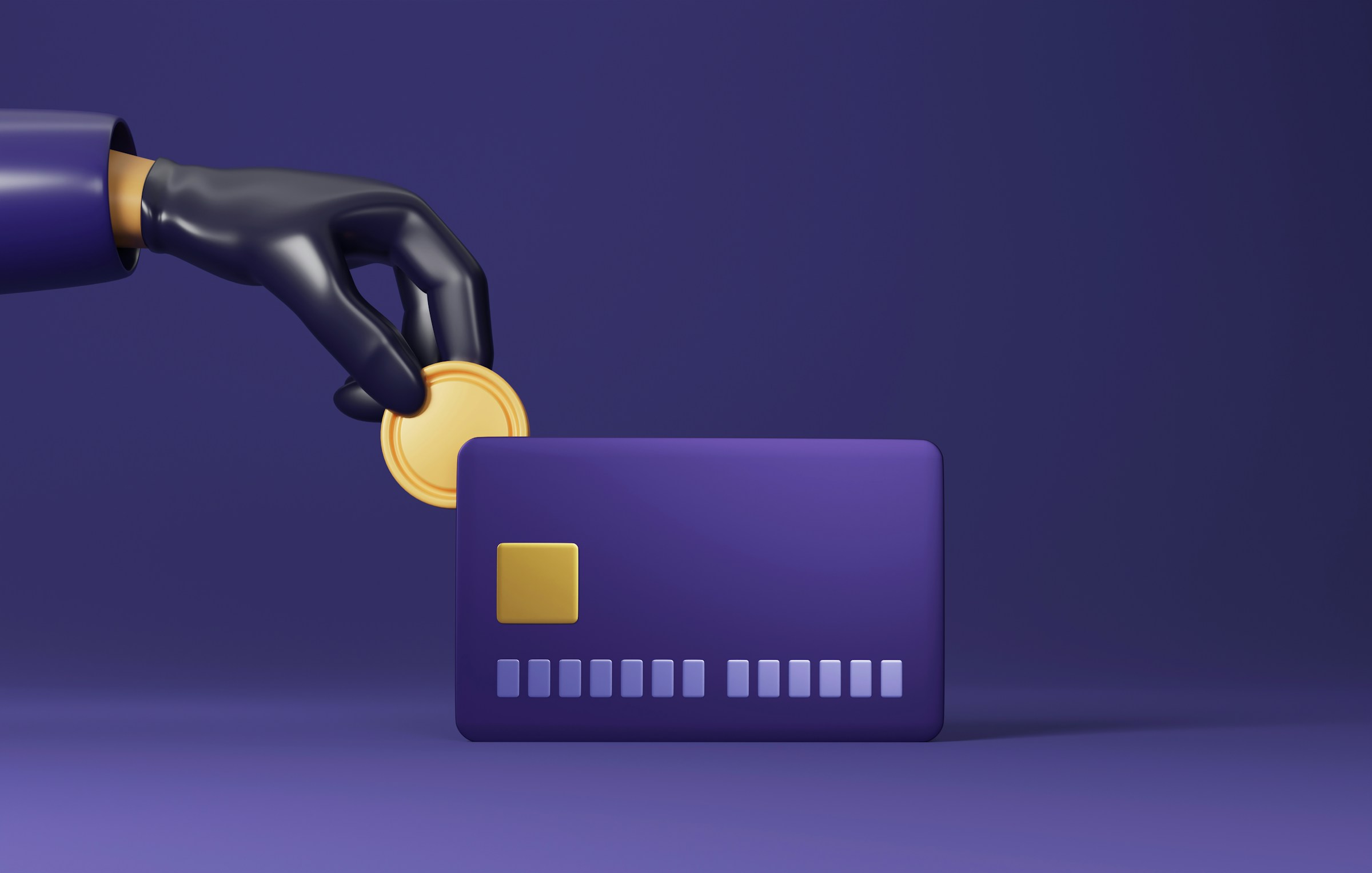Scams look small at the incident level. A drained bank account here. A hijacked ad account there. An influencer partnership that never delivered. At scale, they reshape how money moves. Fraud becomes a growth tax that every honest user pays. It shows up in higher fees, heavier compliance, and product friction that drags conversion. It quietly reduces the speed of economic exchange. That is not just a platform problem. That is an economy problem.
The fastest way to see the impact is to follow the incentives inside a transaction loop. A buyer tries to pay. A seller tries to receive funds. A platform tries to match them and take a fee. A bank tries to clear the payment and avoid losses. Insert fraud pressure into any node and the rest of the loop compensates. Rules tighten. Reviews slow. Margins thin. Trust decays. The loop still functions, but velocity drops and cost rises. Real output takes a hit because the same transaction now consumes more verification, more people, and more capital buffers.
Start with payments. Card networks and banks price risk into every swipe. When scams increase, chargebacks rise. Issuers pay more in fraud losses and invest more in detection. Acquirers widen reserves and hold payouts longer. Merchants see higher interchange and dispute costs. Platforms insert step-up authentication. Each control reduces fraud but also reduces conversion. A two percent drop in checkout completion feels small. Multiply that by millions of carts and you get a material revenue drag. The economy absorbs that loss as lower sales, lower reinvestment, and fewer new hires.
Now look at digital advertising. Click fraud, fake app installs, and bot-led engagement distort campaign performance. Growth teams scale spend on what looks like cheap acquisition. The cohort never monetizes because it was never real. CAC appears stable until retention and payback windows reveal the hole. Budgets that should have funded product or support get routed to chasing ghosts. When the fraud share of ad inventory rises, the return on real ads falls. The remedy is heavier attribution, stricter allowlists, and more expensive data contracts. The net effect is the same. Higher cost to acquire a real customer and more time to find the channels that work. GDP does not capture the wasted cycles, but they are felt in the slower formation of sustainable demand.
Marketplaces get hit through seller quality, counterfeit supply, and buyer protection abuse. The platform response is predictable. Stricter onboarding, deposits, and identity checks for sellers. Tighter refund policies and risk scoring for buyers. Stronger listing audits and takedowns. Each layer filters out bad actors. Each layer also pushes away good supply on the margin, especially in emerging markets where documentation is messy or cash flow is thin. When a platform loses honest long-tail sellers, assortment shrinks and prices rise. That moves the economy away from efficient matching and toward concentrated supply with more pricing power.
Creator and influencer ecosystems pay the trust tax through agency vetting, escrow, and contract overhead. A brand burns once on a fake metrics partnership and swings hard to closed rosters and rigid compliance. Smaller creators get locked out, even when they are real. Spend consolidates with a few large intermediaries. The distribution of income narrows. New creative entrants lose optionality. That is an economic cost, even if it reads like a marketing story, because discovery friction translates into slower demand for new products and weaker diffusion of innovation.
Enterprise SaaS is not immune. Fraud shows up in credential stuffing, fake trials for resource drain, reseller abuse, and money mule schemes through dubious affiliates. The operational response is heavier KYC at sign-up, rate limits, user scoring, and stronger identity proof. Support queues get longer, legal reviews get deeper, and procurement diligence gets slower. Deals slip quarters. Cash conversion stretches. Public markets call it seasonality. The root cause is often trust friction that shifted from the internet to the enterprise workflow.
There is also a capital markets angle. High fraud environments command a risk premium. Banks increase loss reserves. Fintech lenders reduce approval rates or raise APRs. Payment companies enhance monitoring and hold more capital against operational risk. Venture capital reduces exposure to models that depend on open participation without strong proof-of-trust. When the cost of capital rises for whole categories, fewer experiments get funded and fewer platforms reach escape velocity. Opportunity cost does not show up in any police report. It shows up in the absence of new services that could have existed.
Regulators and policymakers then enter with consumer protection mandates, data retention rules, and real-time reporting expectations. These rules can be the right call. They also raise fixed costs for compliance. Large incumbents can handle the burden with teams and tooling. New entrants have to choose between slower go-to-market or risky shortcuts. The market tilts toward scale over innovation. That tilt has long-run implications for productivity and competition, which are the two levers that matter most for growth.
The most underappreciated loss is confidence. Households that fall for scams reduce online spending and delay adoption of new services. Older consumers retreat to cash or branch visits. Small businesses switch off card acceptance to avoid chargebacks and fees. These are rational moves for an individual after a bad experience. At the macro level, they reduce digital participation and slow the productivity gains that come from electronic rails. Economies that are trying to lift cash usage into formal channels pay twice. They pay to build the rails. Then they pay again to convince citizens the rails are safe.
There is a narrative that better AI will fix this. Improved detection helps. So do device fingerprinting, network graphs, strong authentication, and smarter credit controls. Yet fraud adapts because incentives adapt. The more the economy digitizes, the bigger the prize for the attacker and the more blended the attack vectors become. Social engineering bypasses technical gates by recruiting the user. Money mules launder proceeds through real accounts owned by people in financial stress. Deepfake voice adds scale to phone scams. The frontier keeps moving because the margin keeps existing.
So what actually works at the system level. First, align loss with control. The actor best positioned to detect and prevent a given fraud should bear a larger share of the loss. When losses are socialized and control is centralized, the system drifts toward box-ticking. When losses are priced into the point of control, incentives push toward real prevention and better UX that keeps good users in flow. You can see this logic in liability shifts for card-present fraud after chip adoption. You see the same thing in platform programs that claw back fees from sellers who breach authenticity rules.
Second, reduce the attack surface created by gray markets. Cheap SIMs, throwaway accounts, and anonymous wallets create cost-effective vectors for abuse. The response is not blanket bans. The response is layered identity that preserves privacy while constraining mass abuse. Think portable verified identity that a user can present across platforms without re-uploading sensitive documents to every service. Think secure attestations for device integrity that are hard to fake at scale. These designs are not just security theater. They increase the attacker’s marginal cost per attempt, which breaks the spam economics behind many scams.
Third, fix growth math that rewards quantity over veracity. If an ad platform compensates on clicks without robust traffic quality controls, it subsidizes bot farms. If a marketplace over-indexes on GMV without net fraud-adjusted take rate, it pays bonuses on counterfeit volume. If a fintech celebrates sign-ups without measuring legitimate active users net of synthetic identities, it will fund the wrong channels. The economy benefits when platforms internalize fraud costs in their own dashboards. The right metric is not headline growth. The right metric is healthy growth that survives post-fraud reconciliation.
Fourth, invest in consumer muscle memory for safe flows. Most users do not read threat models. They remember defaults and they follow prompts. If the safe path is easy, they will pick it. If the dangerous path is easier, they will pick that. Product teams need to make the safest action the fastest action. Banks that route large transfers through trusted payee lists and mandatory cooling periods reduce scam losses. Marketplaces that make it trivial to verify sellers with official registries increase trust without scaring off real supply. These are product choices that shift macro outcomes because they change the base rate of successful attacks.
Fifth, calibrate enforcement to disrupt the money movement, not only the scam pitch. Education helps. Takedowns help. The real choke point is settlement. When money cannot clear easily from victim to attacker to cash-out, the model collapses. That is why coordinated action between banks, payment companies, and law enforcement matters. Real-time interdiction is costly. It is also where the return on effort is highest. The economy benefits because the same rails that move commerce also carry risk. Cleaning them improves both.
If you are a founder or operator, treat scams as systemic debt. Every new growth channel, payment method, or supply line introduces fraud vectors. Price that into your roadmap. If your unit economics only work in a zero-fraud world, your model is not ready for the real world. Build so that your best users experience less friction over time. Build so that your worst actors experience more cost over time. That is not just good security. That is competitive advantage, because lower honest-user friction compounds while your rivals are still playing whack-a-mole.
For policymakers, the goal is not to eliminate fraud to zero. The goal is to keep trust high enough that digital participation continues to grow. Rules that preserve strong authentication, rapid data sharing for confirmed scams, and proportionate liability at the point of control push in the right direction. Rules that force all risk onto the last visible node push in the wrong direction. The first approach keeps incentives aligned with prevention. The second approach drives good actors out of the market and leaves citizens to fend for themselves.
Zoom back out to the economy. Scams reduce productive velocity by injecting fear, friction, and false signals into the systems that match buyers with sellers. The losses are not only the stolen amounts. They are the slower checkouts, the wasted ad dollars, the paused experiments, and the customers who stop trying new things. That is why the economic impact of scams is larger than any annual fraud tally. It is a structural drag on growth because it taxes trust. Companies that design for fraud-resilient growth will outcompete because they preserve speed without burning trust. Economies that back that posture with smart rails and smart rules will grow faster because more of their energy fuels value creation rather than defense.
The headline question was how scams affect the economy. The answer is through the price of trust. When trust is expensive, everything slows. When trust gets cheaper because the system is designed well, everything speeds up. That is the lever that matters.











.jpg&w=3840&q=75)


